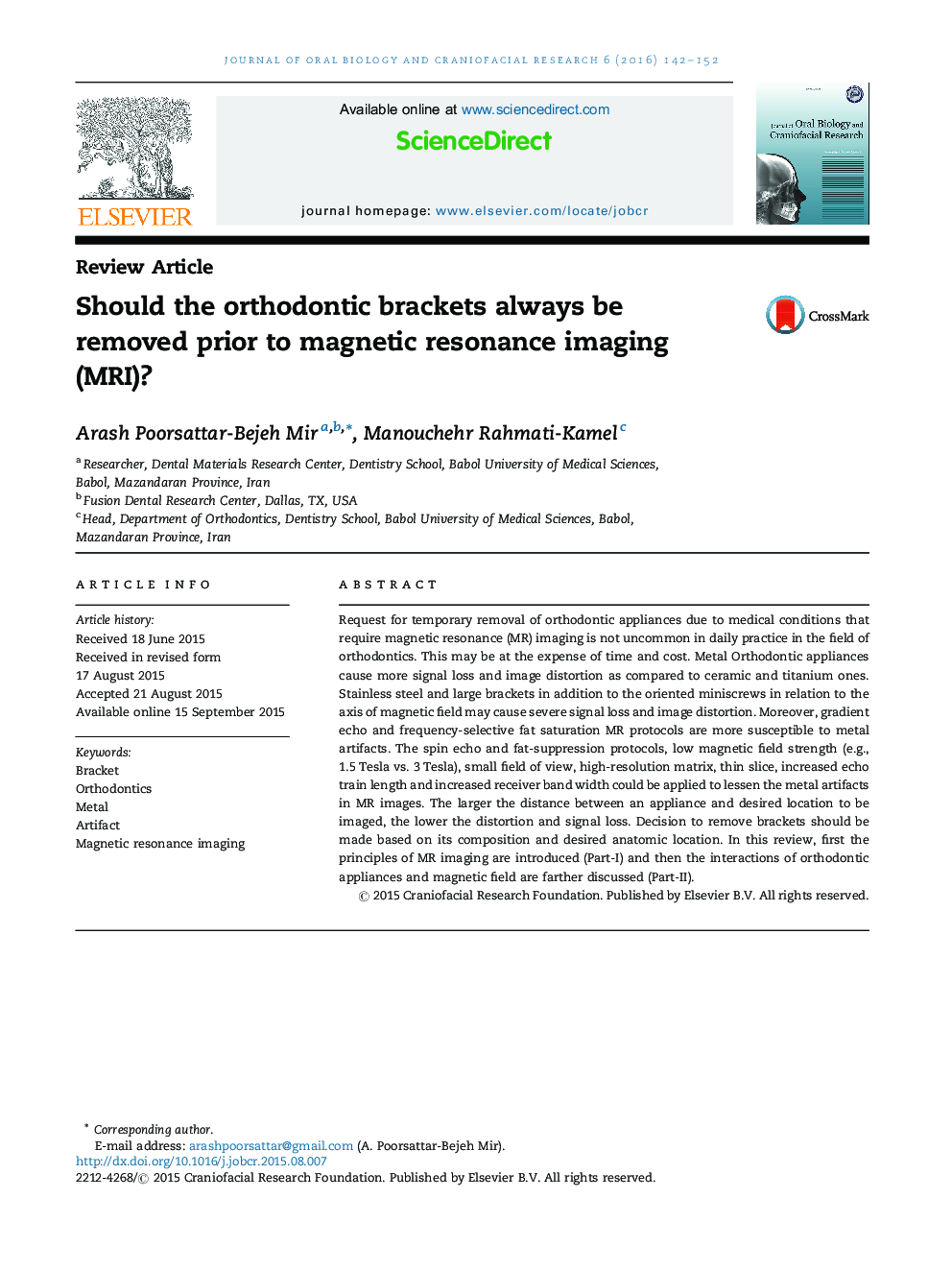| Article ID | Journal | Published Year | Pages | File Type |
|---|---|---|---|---|
| 3152147 | Journal of Oral Biology and Craniofacial Research | 2016 | 11 Pages |
Request for temporary removal of orthodontic appliances due to medical conditions that require magnetic resonance (MR) imaging is not uncommon in daily practice in the field of orthodontics. This may be at the expense of time and cost. Metal Orthodontic appliances cause more signal loss and image distortion as compared to ceramic and titanium ones. Stainless steel and large brackets in addition to the oriented miniscrews in relation to the axis of magnetic field may cause severe signal loss and image distortion. Moreover, gradient echo and frequency-selective fat saturation MR protocols are more susceptible to metal artifacts. The spin echo and fat-suppression protocols, low magnetic field strength (e.g., 1.5 Tesla vs. 3 Tesla), small field of view, high-resolution matrix, thin slice, increased echo train length and increased receiver band width could be applied to lessen the metal artifacts in MR images. The larger the distance between an appliance and desired location to be imaged, the lower the distortion and signal loss. Decision to remove brackets should be made based on its composition and desired anatomic location. In this review, first the principles of MR imaging are introduced (Part-I) and then the interactions of orthodontic appliances and magnetic field are farther discussed (Part-II).
